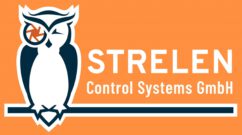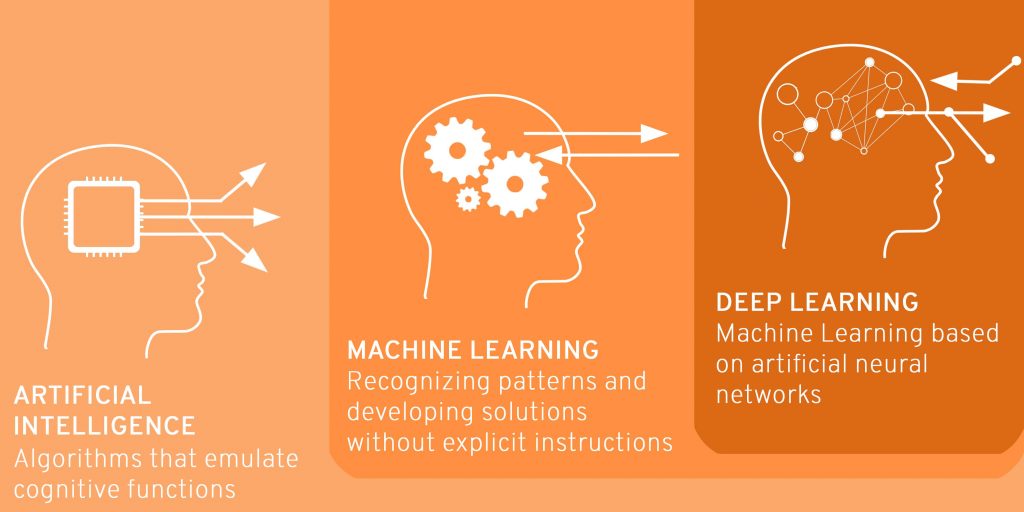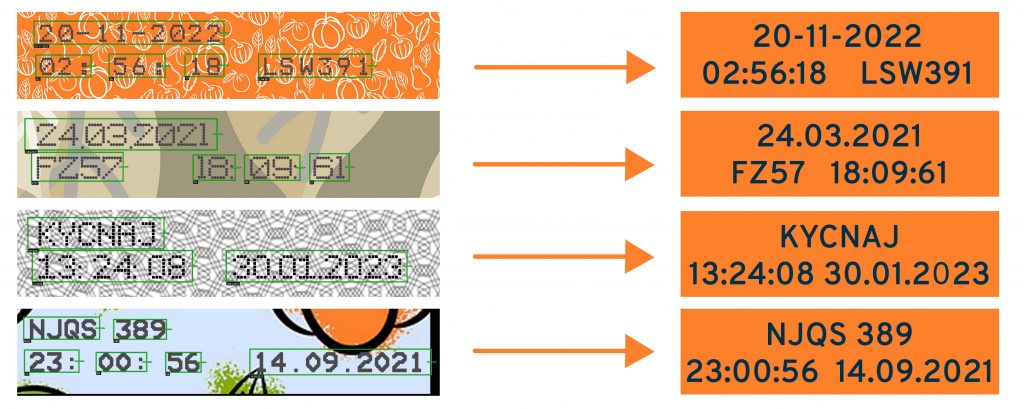Deep Learning and AI
Artificial intelligence is a branch of computer science that transfers certain aspects of human thinking to computers: such as learning, judging and problem solving. Sophisticated algorithms can recognize patterns in unstructured data sets such as images, texts or spoken language and make autonomous decisions based on these patterns. Machine learning and deep learning are used in this process for instance.
In machine learning, IT systems use existing data to recognize patterns and regularities and use this knowledge to generate solutions. A particularly promising method of machine learning is deep learning, which uses very deep neural networks with multiple layers and a large volume of data.
Deep Learning imitates the functioning of the human brain by forming artificial neural networks in which the artificial neurons, which are connected to each other via layers, have to be trained. During the intensive learning phase, the neurons receive feedback on how they have contributed to a current result. Over time, they change based on this feedback, and the connections between neurons are also subject to a constant process of development. This optimizes the ability of the entire neural network with respect to classification or approximation tasks.
Deep Learning imitates the functioning of the human brain by forming artificial neural networks in which the artificial neurons, which are connected to each other via layers, have to be trained. During the intensive teaching phase, the neurons receive feedback on whether they are right or wrong in their judgments or classifications. This feedback changes the connections between the neurons, as the cor-rect ones become stronger and the incorrect ones weaker. Thus, an artificial intelligence slowly emerges and the neuronal network continues to develop independently.
This represents an enormous step forward for digital image processing. Instead of having to precisely program the system laboriously by hand as to which features it must pay attention to in order to be able to clearly recognize an object in an image, the algorithm is now taught to learn for itself what the relevant features are. This can be easily understood using the example of character recognition of plain text. During the learning phase, the algorithm receives feedback as to whether it has correctly recognized handwritten letters or whether the extraction was incorrect. In this way, it learns to recog-nize increasingly better what the specific criteria are that distinguish the individual letters. The human brain does a masterful job at this form of decoding, but we can rarely explain why we know exactly which letter this handwritten character is supposed to represent – even if it deviates from the norm.
Strelen has successfully implemented a large number of Deep Learning projects in recent years and offers the following products based on Deep Learning:
• SAFE-IDENT OCR: character recognition
• SAFE-IDENT Label: label verification
• SAFE-IDENT OCR: character recognition
• SAFE-IDENT Label: label verification
In addition to our own products, we also offer solutions for your very specific needs:
• Consulting services and feasibility studies
• Complete customer-specific Deep Learning implementations
• Porting of Deep Learning based solutions to AI hardware accelerators
• Consulting services and feasibility studies
• Complete customer-specific Deep Learning implementations
• Porting of Deep Learning based solutions to AI hardware accelerators
Deep Learning Feasibility Analysis
Due to its ability to recognize and assess complex structures, methods based on Deep Learning are ideal for assessing the quality of objects. These can range from the simplest components such as screws, plugs or spot welds to complex machines, and also to packaging, foodstuffs or bulk materials.
Strelen Control Systems GmbH has implemented Deep Learning-based methods for quality assessment in a wide variety of industries and applications. In order to assess whether and how well a Deep Learning-based quality analysis performs, a comprehensive feasibility analysis should always be conducted at the beginning of a project. For this analysis, real images of the products or objects to be assessed should be evaluated in an experimental setup by a Deep Learning-based neural network optimized for the respec-tive task.
In order to minimize the time span of a project implementation and the costs of such a feasibility analysis, Strelen Control Systems has constructed a test environment that can be quickly adapted to different products and tasks.
If you can already provide images of the products to be evaluated, we can implement such a feasibility analysis within a few days. As a result, you will receive a well-founded analysis with a statement as to whether and how well an automatic, Deep Learning-based quality analysis can be realized – combined with a concrete offer for realization.
Picture Credits: © Strelen


